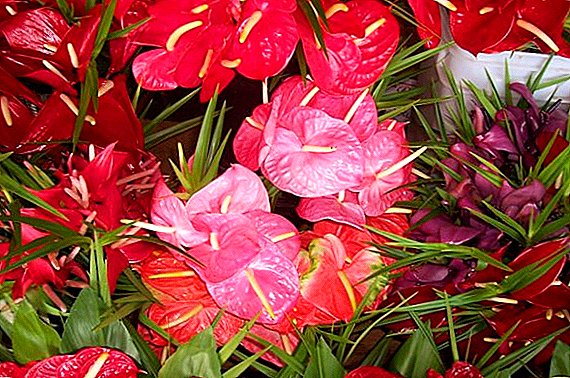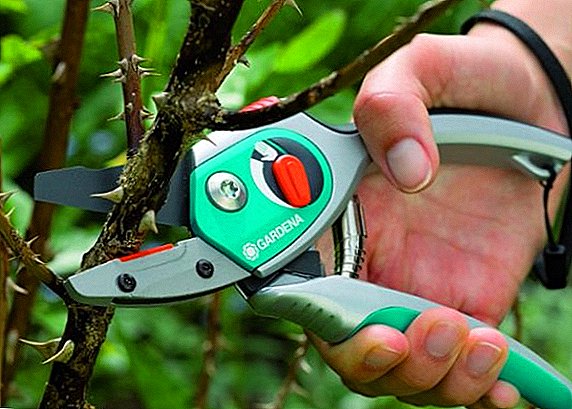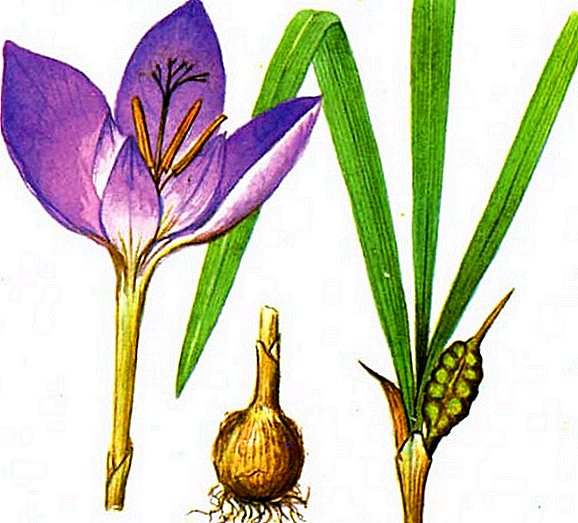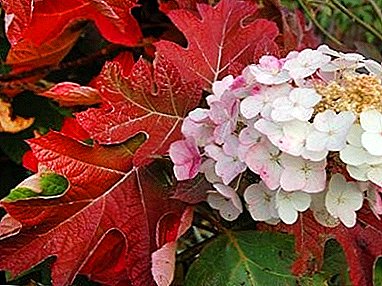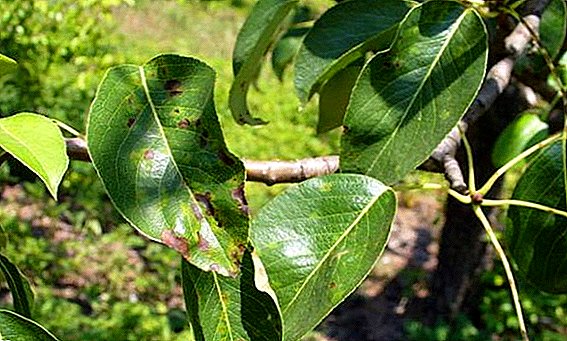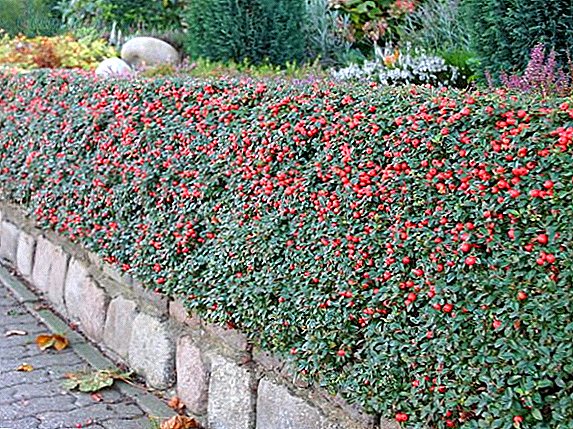 Sweet cherry is one of the first berries of the season, sweet and fragrant, giving pleasure and fresh vitamins after winter. Many people want this pleasure to have in their garden and use it as soon as the berry ripens. But is it possible to grow a sweet cherry from a stone Will the result be a good grade? In any case, it is curious to check how this undertaking will end.
Sweet cherry is one of the first berries of the season, sweet and fragrant, giving pleasure and fresh vitamins after winter. Many people want this pleasure to have in their garden and use it as soon as the berry ripens. But is it possible to grow a sweet cherry from a stone Will the result be a good grade? In any case, it is curious to check how this undertaking will end.
Advantages and disadvantages
In order for the gardener-experimenter to have no illusions, we note that it is hardly possible to grow cultivar cherries in this way: a tree obtained from a stone will not yield such fruits as those from which seed is taken. Cherry grown from the stone will produce small fruits with a sour and even tart flavor. That is, the result of experience is likely to be a tree-wilderness.
However, it is impossible to call such a plant useless, it has a lot of advantages that a reasonable gardener will appreciate and use to good.
Check out the most popular varieties of cherries: "Regina", "Bull's Heart", "Revna", "Bryansk Pink", "Krupnoplodnaya", "Iput", "Leningradskaya Chernaya", "Valeriy Chkalov" and "Diber Black".

This wild:
- unassuming, does not require special conditions for itself, as a varietal sweet cherry could;
- has strong immunity to various diseases;
- frost-resistant;
- not as susceptible to pest attacks as trees grown from seedlings;
- already adapted to the conditions and microclimate of the soil and territory.
- along the roads;
- in the squares of megacities;
- in places of concentration of industrial enterprises.

Due to the excellent health of cherries, which managed to grow out of the stone, it is very beneficial to use as a stock for various hybrids and cultivated varieties.
Did you know? Cherry make food dye, and not red or yellow, and green.Fascinating exercise, which is the germination of cherry tree from the stone, you can work with children at home. It will bring you the pleasure of working together, will slightly open before the younger generation a veil of secrets of nature, teach her to love and follow its laws. The point is quite painstaking, but very informative and interesting.

Landing dates
After the bones have been processed, they should be planted in the ground. This is usually done in spring, but for the southern regions an exception can be made and an autumn planting can be carried out, in this case the future tree has more chances for adaptation, it will turn out to be stronger and more stable.
Read how to grow grapes, plum, date palm, olive tree, apricot, longan (dragon eye) from the seed so as to get a good harvest in the future.
Selection of pits
Usually, stone fruits grow well, in 70-80% of cases the sprout is strong and viable. The quality of seed is the key to a strong, healthy tree.
Bones are taken from completely ripe and even over-ripe berries. The cherry on which they grew should grow in the area, because imported berries are removed when they reach the so-called technical ripeness, so that they do not lose their presentation during transportation. 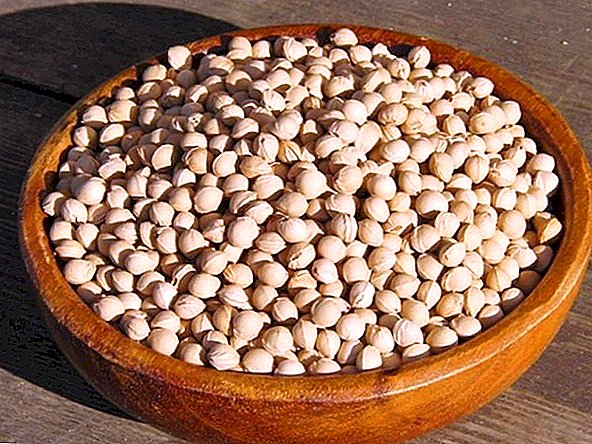
Important! Dried seeds are not suitable for sowing; the pecking of the sprout will be more successful than the fresh stone from which it grows.However, no one plants a seed in May or June, its natural cycle includes wintering in the ground. Sprouts sprouted in summer do not have time to get stronger by the winter, they will weaken greatly, or even die.
In order for the bone to remain fresh, it retains its ability to germinate, it is placed in wet sand. Of course, the sand should be washed and calcined. The stones in the sand are conveniently subsequently stratified, that is, “create a winter” in which they do not die, but on the contrary, they will get stronger, prepare properly and will germinate together.
Did you know? Cherries are also called "bird cherry", probably because of the love of birds for the sweet pulp of its berries.

Planting Stratification
Bones germinate quite easily, but in order for them not to wither and die later, hardening is necessary.
Preparation depends on the region, as you move to the south, the chances of an autumn planting, which means that for a short period of stratification, increase.
In the southern regions: Crimea, Kuban, Krasnodar Territory, the bones are placed in wet sand until autumn, then planted in the soil. Wintering naturally, the bones in the spring produce strong shoots.
In regions with more severe conditions: Black Earth, Stavropol, Rostov region, the material is placed in a wet substrate and kept for 5 months. Hardening begin in late autumn and produce in natural conditions. In severe frosts, containers are removed from the street, imitating a mild winter.
Find out what the most delicious varieties of sweet cherries.

Did you know? From the point of view of science, cherries, like cherries, are not berries, but are fruits, just like plums.In the regions of the middle zone of winter such severe that in natural conditions the material can not be hardened. The containers with the substrate, in which the bones are placed, are kept in conditions where the temperature is not lower than 1-5 degrees, and they are planted in the ground after the snow melts.
Stages of preparation of inoculum:
- Select the largest and quality stone, better with a margin, given that 7-8 out of 10 will ascend.
- Rinse well with water to remove residual pulp.
- Dry bones, spreading them on the fabric in one layer.

At this stage, you need to make sure that the material does not dry out, it will adversely affect germination.
- After drying, they must be collected in a paper and on top of a plastic bag.
- Until such time as they are needed, the bones should be stored at a temperature of 20 degrees, periodically inspecting and airing them.
- In December, when it is time to prepare, the material is soaked in water for 3-5 days, changing it daily.
- Treat the soaked seeds with any fungicidal agent.
- Soaked stones should be placed in the substrate, which can serve as sand, moss-sphagnum or sawdust, send the container to the refrigerator for 3 months.

Important! Defrosting the refrigerator, you should take care of the place where the seed will go to this time so that there is no stress from the temperature difference.
- The material of each grade should be processed in a separate container without mixing the grade.
- When the spring comes, take the containers outside, covering them with snow on top.
- These manipulations will succeed when the shells crack, and some begin to germinate.
Important! You can use stones from frozen cherries, not subjecting them to heat treatment. Store them in the same manner as described above. If you do not use absorbent material during storage, bones will be at risk of infection by fungi and mold.

How to plant a bone
The material is planted for subsequent germination in the usual half-liter pots or a common container with a not very high rim.
Substrate preparation
You can use ready-made purchase substrate intended for vegetable seedlings. If the soil in which the mother tree grew is fertile enough, it is preferable to use it for planting sprouts, pre-calcined it in the oven or scalded. 
Planting seed
After a sprout appears between the scattered shells, it is time to plant it:
- Put drainage at the bottom of the pot or tray, pour the substrate on top.
- Close up the bones into the soil by 1-2.5 centimeters.
- If planting is made in the common tray, it is necessary to observe the 15-20 centimeters interval between plants.
- Having moistened the soil, the container is covered with glass or cellophane and put in a cool place on the windowsill.
Did you know? That cherry was the ancestor of the cherry, and not vice versa. Sources dating back to 8 thousand years BC indicate that people use its antiquity, that is, people use this wonderful tree for at least 10 thousand years!
Vaccination and care of the tree
Care for young seedlings:
- There should be no shortage of water, but an excess is also harmful: the first will cause the plant to shed its leaves, the second will create a favorable environment for the fungal infection, especially dangerous for the stone fruit plants.
- When the first true leaf appears, the young cherries begin to feed, repeating the procedure every 2 weeks.
Important! Do not use manure or manure as a fertilizer, they will burn the roots. Optimal use infusion of humus.
- Once a week, the above-ground parts arrange a "rain" from the spray gun, having previously protected the soil from excess moisture.
- To access oxygen periodically loosen the soil.

If trees like conditions, they grow well and by the autumn reach 25-30 centimeters.
In the second year of life, a crown is formed, especially if it is planned not to repot the tree in open ground, but to leave it to grow in a pot. In this case, it provides a large capacity as they grow.
Further conditions for seedlings are created taking into account how the gardener plans to use them:
- Intended for growth in open ground, trees for 2-3 years remain in the house, where they are properly maintained. If it is impossible to keep them indoors for so long, those seedlings that were sown in the spring should be transferred to the place where they will live in October, in order to allow them to adapt to frost. If an early cooling is planned, it is advisable to let them spend the winter indoors and land them in the spring.
- Appointed to be a stock in the middle of autumn, they remove the leaves, cutting them off, then pruning the trunk, leaving a 20-centimeter shoot. This procedure will stop the development of the aerial parts of the plant and stimulate the growth of the root system. Plants prepared in this way are placed in a cellar where they are to spend the winter.
- The sweet cherry growing in the tub will certainly decorate the interior, but one should not forget that it is a deciduous deciduous tree. In addition to proper care, it should be regularly provided with more bulk packaging, made "winter" for it, transferred to a room with a 12-degree temperature, and carried out in the spring to the street, where she will spend the whole season before the cold weather.
Did you know? Being a magnificent honey plant, cherry gives 35 kilograms of pollen from each hectare of plantings.At 4-5 years of age, the tree blooms, and subsequently fruit is tied. As already mentioned, they are unlikely to have anything in common with their parents, and if you want to grow a tasty sweet cherry from a stone at home, there is only one way out - to plant a cultivar.
 It is possible to inoculate in the third year of the tree’s life. Graft zoned in the area, it is better to just two for mutual pollination. Since the trunk of a three-year-old tree has a small diameter, it makes sense to plant a culture using the technique of splitting:
It is possible to inoculate in the third year of the tree’s life. Graft zoned in the area, it is better to just two for mutual pollination. Since the trunk of a three-year-old tree has a small diameter, it makes sense to plant a culture using the technique of splitting:- A previously prepared stalk of a cultured tree, on which there are several healthy buds, is cut to obtain a clean oblique cut.
- The stock, in turn, is cut to a height of 15-18 centimeters.
- It is very important to perform manipulations with a clean, sterile instrument and to ensure that the earth does not fall into fresh sections.
- In the rootstock do splitting depth of 3-4 centimeters, it is necessary for the culture to take root better, having a more intimate contact.
- The combined parts are wrapped with tape so that the adhesive side is on the outside (you can use a different insulating material).
- Vaccination needs to be treated with garden pitch.
Familiarize yourself with the most dangerous cherry pests and how to control them.

When young leaves appear above the junction, you can congratulate yourself: the vaccine has successfully taken root. Now it is necessary to control that the strapping does not overtighten the trunk, and to help the new tree to adapt to street conditions.
Such a tree is transplanted into the ground in the fall, if it happens in the southern regions, and in spring in a more temperate climate.
No matter what goal you set for yourself, growing a sweet cherry from a stone, and no matter how it turns out, as a result you will get a new tree, which in itself is joyful, and you don’t need to adapt it for anything.


